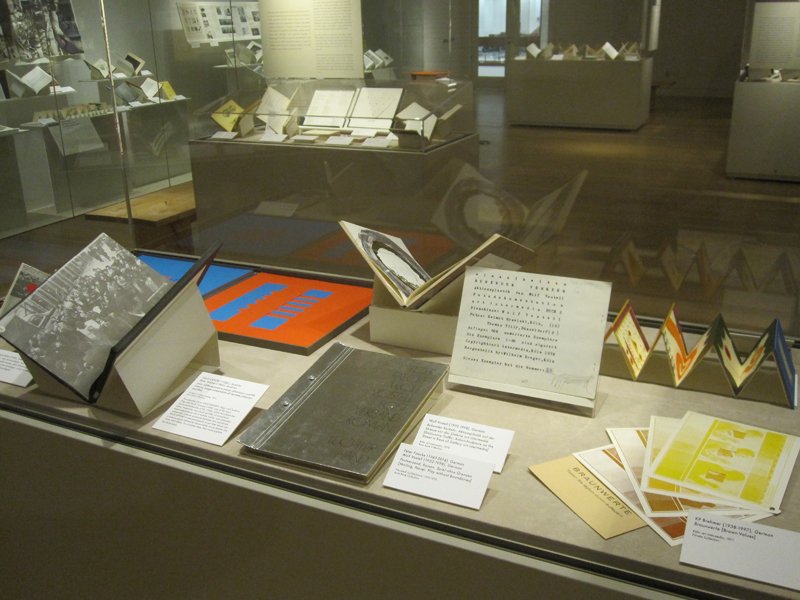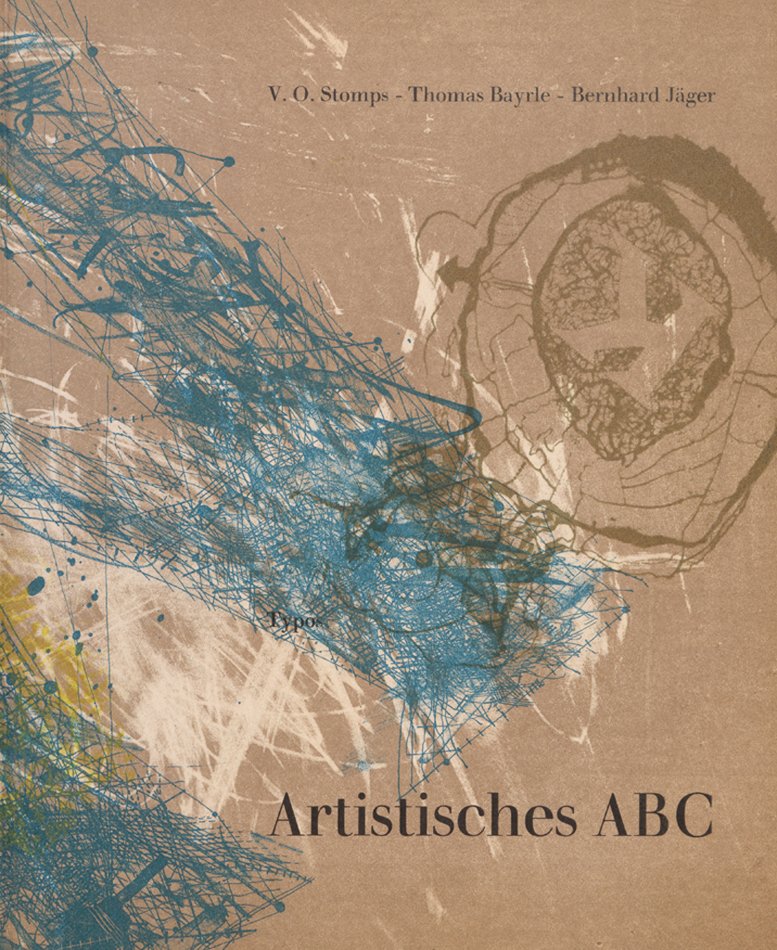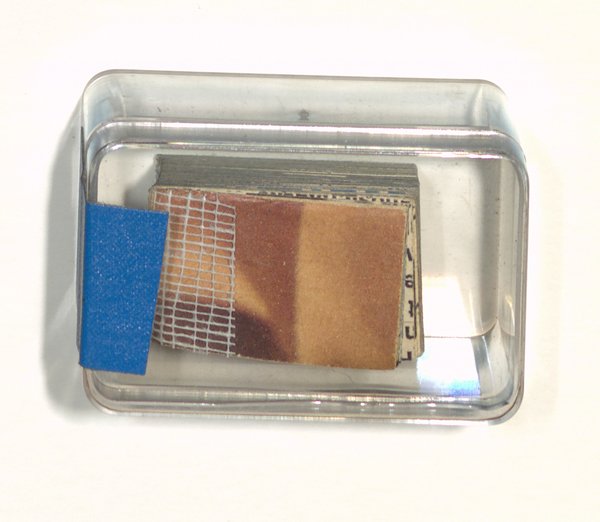What is an Artist's Book?
What is a book? What is art? This exhibition takes the perspective that any work is an “artist’s book” if it engages these two questions. As the title of the exhibition suggests, the artists collected in Concrete Poetry, Concrete Book were concerned with the materiality not only of the printed book but also of language and text itself. An investigation of the sense or senses involved in reading— an action at once perceptual, intellectual, and physical, if not metaphysical—linked the projects of poets, graphic artists, and performance artists.
The artist’s book also became an important medium in this period for documenting and anthologizing performance art. Rarely simply documentary, however, such anthologies reflect on the paradoxes of recording and preserving “happenings,” actions, and performances that often drew attention to their own transience and singularity.
While Thomas Bayrle and Bernhard Jäger’s Artistisches ABC reimagines each letter of the alphabet as a repeatable pictorial image or sign, Dieter Roth’s early books tend to do away with language and letters altogether, inviting tactile encounters that challenge the posture of reading by compelling the reader to reorient their physical comportment to his books and their pages. KP Brehmer’s Braunwerte presents the reader with a multi-page optical device with which to supplement the process of reading the newspaper, thereby giving a politically invested critique of what constitutes the news.
VALIE EXPORT and Peter Weibel’s co-authored wien: bildkompendium wiener aktionismus und film assembles materials that document over a decade of artistic action in Vienna, while Wolf Vostell’s Ruhender Verkehr records the making of his “action sculpture” in Cologne. With novelist Peter Faecke, Vostell engaged over the course of 1970 in an open-ended practice of collaborative and communicative exchange. Beginning in Chicago during the making of the sculpture Concrete Traffic (1970)—the concrete-encased Cadillac that inspired Concrete Happenings—the correspondence collected in Postversand, Roman, suggests, as the removable binding confirms, that this “novel” might be continued indefinitely.
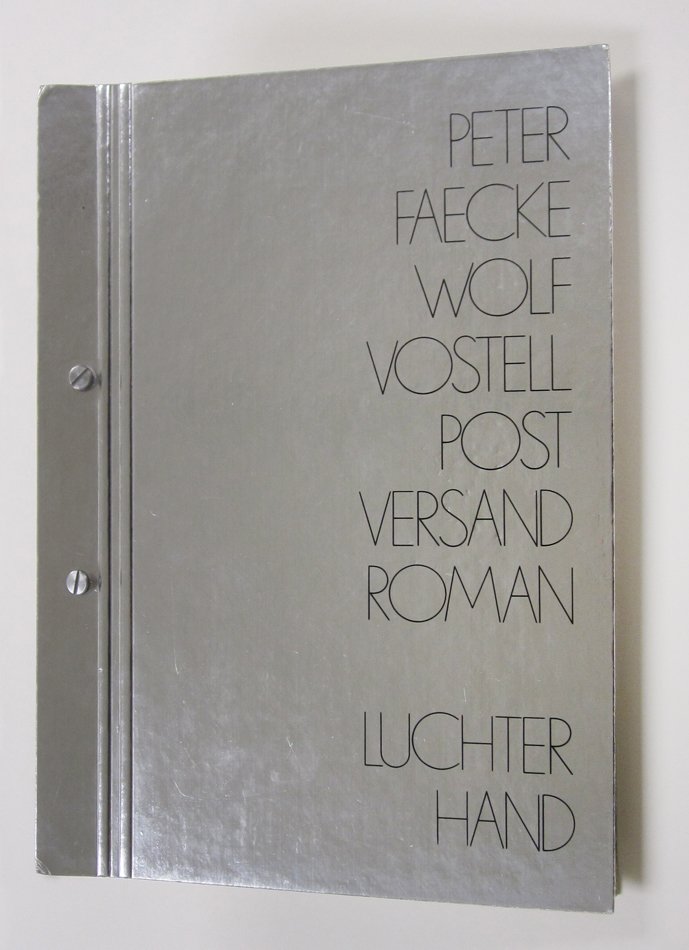
Peter Faecke (1940-2014), German
Wolf Vostell (1932-1998), German
Neuwied: Luchterhand, 1970-1973
Rare Book Collection
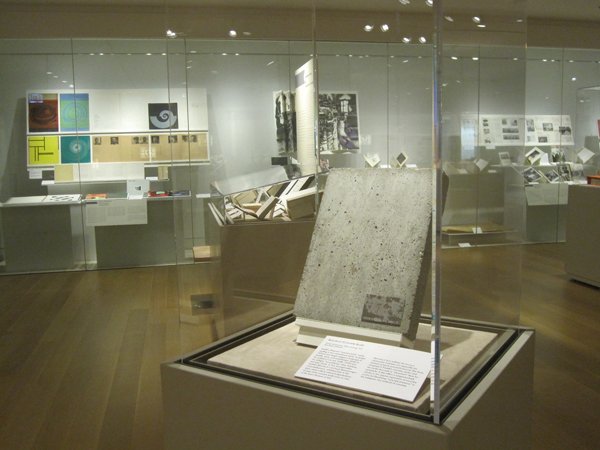
Wolf Vostell (1932-1998), German
Hinwil, Switzerland: Edition Howeg, 1971
Rare Book Collection
Vostell’s 20-pound “concrete book” resists reading in any conventional sense. Its sealed off form and weight suggest a language of tactility, stasis, and entombment, similar to his sculpture Concrete Traffic (1970) and his collages “concretifying” cities, furniture, and even clouds. In fact, encased within Vostell’s Betonbuch is his book Betonierungen (Concretifications), exhibited later in this show, which collects unbound reproductions of many of his concrete works (now on view at the Smart Museum of Art).
Betonbuch thus realizes the tenuous relationship between art—especially the fantastic projects and performances like those imagined in Vostell’s concrete works—and the media that seek to “document” them for perpetuity. It also offers a tongue-in-cheek rebuke to the utopian aspirations of concrete poetry by literalizing “concrete presence” in the inelegant, raw material of concrete.
